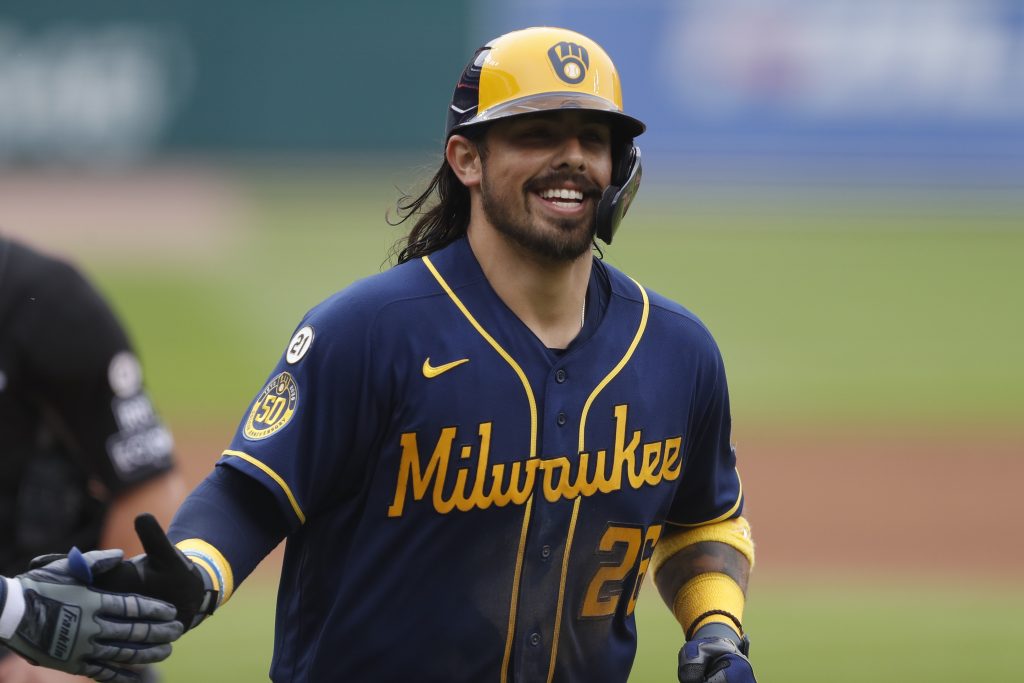
MLB and the MLBPA finally reached a deal on a new collective bargaining agreement on Thursday, ending a contentious lockout that spanned over three months. The major elements of the deal, such as the CBT levels and the bonus pool for arbitration-eligible players, were reported on as the negotiations transpired, but some of the minor details are still trickling out. Mark Feinsand of MLB.com revealed one such detail on Twitter, writing that, “Beginning after 2022, salary arbitration eligible players who settle with their teams on a salary for the subsequent season without going to a hearing will be eligible to receive full season termination pay, even if released prior to the start of the season.”
This is a small change that could potentially have significant ramifications. Under the previous CBA, arbitration contracts were not fully guaranteed until Opening Day, with players cut during Spring Training only earning a portion of the agreed-upon salary. If a team released a player more than 15 days prior to Opening Day, they only had to pay the player 30 days’ salary as termination pay. If the player was released less than 15 days before Opening Day, they would get 45 days’ pay.
This makes for an interesting tradeoff. On the one hand, this could be viewed as a gain for the players, as they now have access to greater security, knowing that the salary they accept will be locked in once they agree to it. But this also gives them incentive to accept terms without the hearing, perhaps leading to them accepting lower terms than they otherwise would have earned, thus benefiting the teams. It is well established that teams put a high priority on stifling salaries as much as possible. In 2019, it was revealed that MLB holds an annual symposium where the team that best succeeds at opposing the players in arbitration is awarded a wrestling-style championship belt, something that surely didn’t help with the animosity that’s lingered between the players and the league since the signing of the last CBA. This wrinkle in the new CBA could help the teams further those goals, but at least could give some borderline non-tender candidates the silver lining of greater financial security.
Elsewhere in the CBA, Jayson Stark of The Athletic provides an interesting nugget on Twitter. “If a team has already claimed a player once on waivers that season, it can’t claim him again until every other team has passed.” Stark aptly refers to this as the “Jacob Nottingham Rule,” in reference to the fact that Nottingham was the centerpiece of a game of hot potato between the Brewers and Mariners last year. Beginning the season with the Brewers, the catcher was put on waivers in April, claimed by the Mariners, who put him back on waivers on May. The Brewers brought him back on a waiver claim, only to send him back onto the waiver wire two weeks later. On May 2oth, Seattle claimed him again, before putting him back on the wire in early June, when he finally cleared. Waiver claim priority generally goes in reverse order of the current standings. (For the first 31 days of the season, the standings of the previous season are used.) In the case of Nottingham, there would have been some teams that never even had the ability to make a claim on him for most of that sequence last year, as he would have been scooped up before their turn. Going forward, they will have a greater chance to interrupt such a unique back-and-forth as occurred with Nottingham last year.
In a detailed column about the CBA, Stark adds some details about the schedule changes that will begin in 2023. While it had been previously reported that teams would play all 29 of the other squads in the league each year, with the number of divisional games being reduced, the details were not known at the time. Stark lays out the format that will begin next year, with each team playing its divisional rivals 14 times per season, down from 19, for a total of 56. Teams in the same league but not the same division will be played six times each, a total of 60. When it comes to interleague play, each team has a “rival” that they will play four times, with three games against the other 14 teams in the opposite league. That amounts to 46 total interleague games. All of those categories are evenly split between road and home, except for the final one. In the case of the 14 non-rival teams that are in the opposite league, the home team for the three-game series will alternate from year to year.
Roch Kubatko of MASNsports.com has a couple of other details in his rundown of the CBA. In terms of PEDs, he says, “There will be an increase in the number of in-season urine tests for performance-enhancing substances and drugs of abuse, as well as adjustments to the scheduling of these tests to make them less predictable.” He then adds that, “the program will now utilize dried-blood spot-testing rather than venous blood draws for hGH testing, making Major League Baseball the first professional sport drug testing program to adopt this new technology.”
Finally, while the increase in the minimum salary for MLB players was reported throughout the negotiations, there is also a bump for some players in the minors. From Kubatko: “The minor league minimum salary for players signing a second major league contract or with prior big league service will increase from $93,000 in 2021 to $114,100 in 2022, $117,400 in 2023, $120,600 in 2024, $123,900 in 2025 and $127,100 in 2026.”
Sports - Latest - Google News
March 12, 2022 at 09:50PM
https://ift.tt/0aIRblW
CBA Notes: Arbitration, Waivers, Schedule, PED Testing, Minor League Salary - MLB Trade Rumors
Sports - Latest - Google News
https://ift.tt/DrYxR9V
Bagikan Berita Ini














0 Response to "CBA Notes: Arbitration, Waivers, Schedule, PED Testing, Minor League Salary - MLB Trade Rumors"
Post a Comment